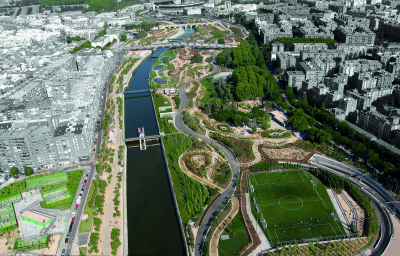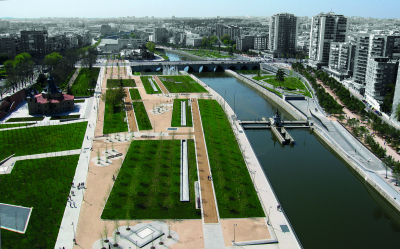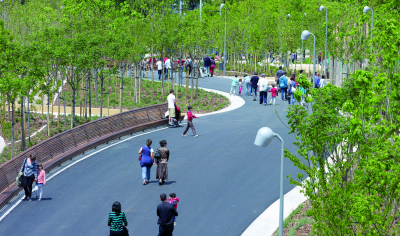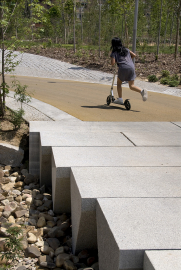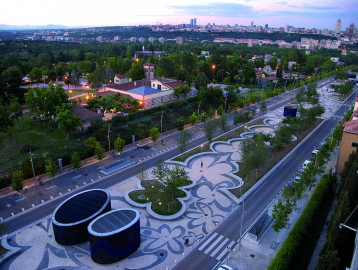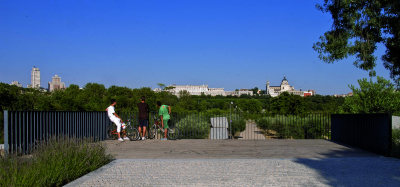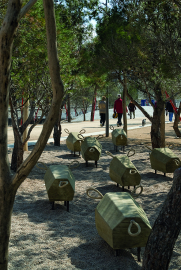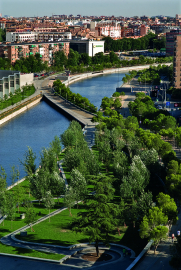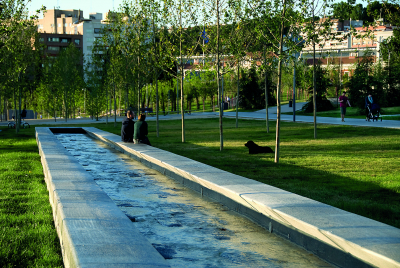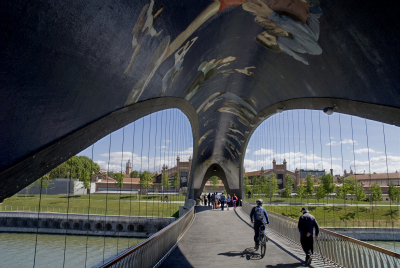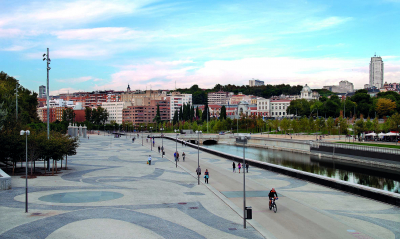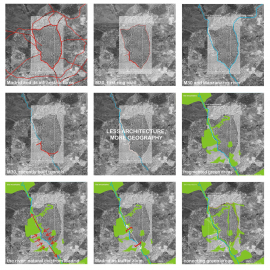Madrid Rio
The decision to place one of Madrid's highways underground provided an unprecedented opportunity to locate the city of Madrid within its surroundings, achieving a greater environmental biodiversity and a city that is greener, more habitable and sustainable.
The Madrid Rio project by Burgos & Garrido, Porras La Casta, Rubio & A-Sala and West8, was the winning entry in the international competition held in 2005 for the design of an urban landscape project in Madrid, over the west section of the M30 highway, which had been previously buried. The project includes: the consolidation of the Manzanares River banks along 6km along the city centre; the design of 150Ha of parks; a dozen bridges; 6Ha of public and sports facilities,; nterpretation and art centres; an urban beach,; playgrounds and cafes and the restoration of the hydraulic architectural heritage.
The decision to place the highway underground provided an unprecedented opportunity to locate the city of Madrid within its surroundings. The project establishes a physical and conceptual continuity between the city centre and the valuable countryside that surrounds it and, consequently, the Manzanares River has been transformed into the node that connects the city to its geography. Madrid Rio as a whole is one of the biggest "urban mat-buildings" in the world.
Vegetation was the main material used on the surface to create a dense and ecological environment, a living landscape of an inert underground substrate. It is a truly exceptional project. It is the most important project executed in Madrid over the last few decades and probably one of the most ambitious projects carried out in Europe in recent times. This is perhaps the first project based on a new approach that involves integrating large infrastructures and the built fabric of cities with the natural environment that surrounds them, producing a place in which the landscape, the city, the architecture and the urban infrastructures combine to achieve greater environmental biodiversity and a city that is greener, more habitable and sustainable.

